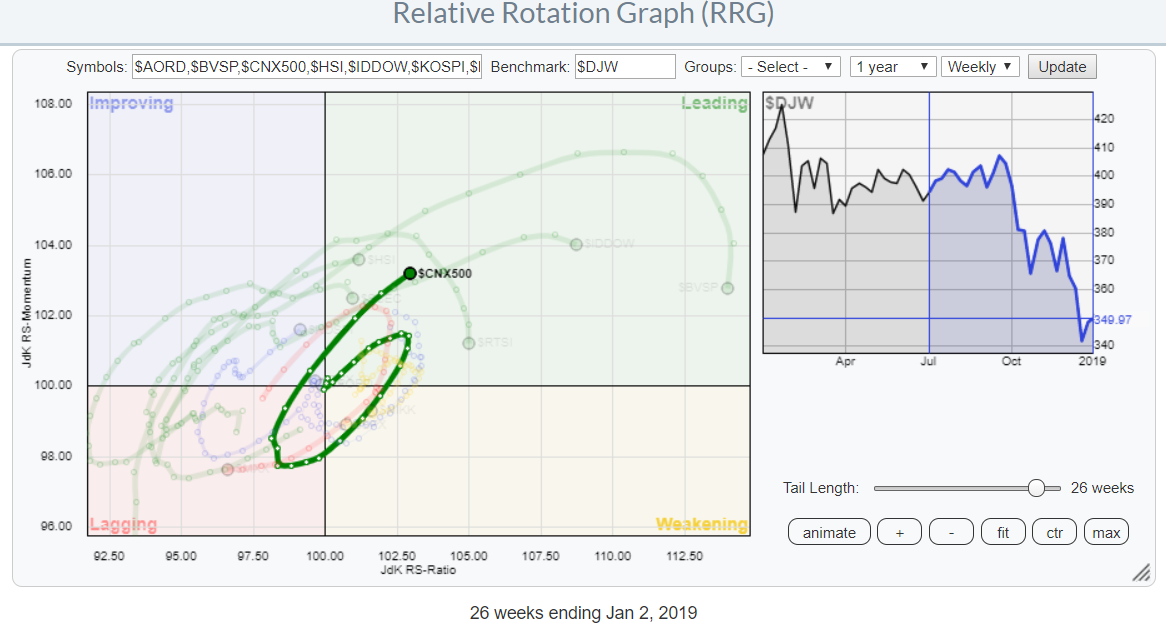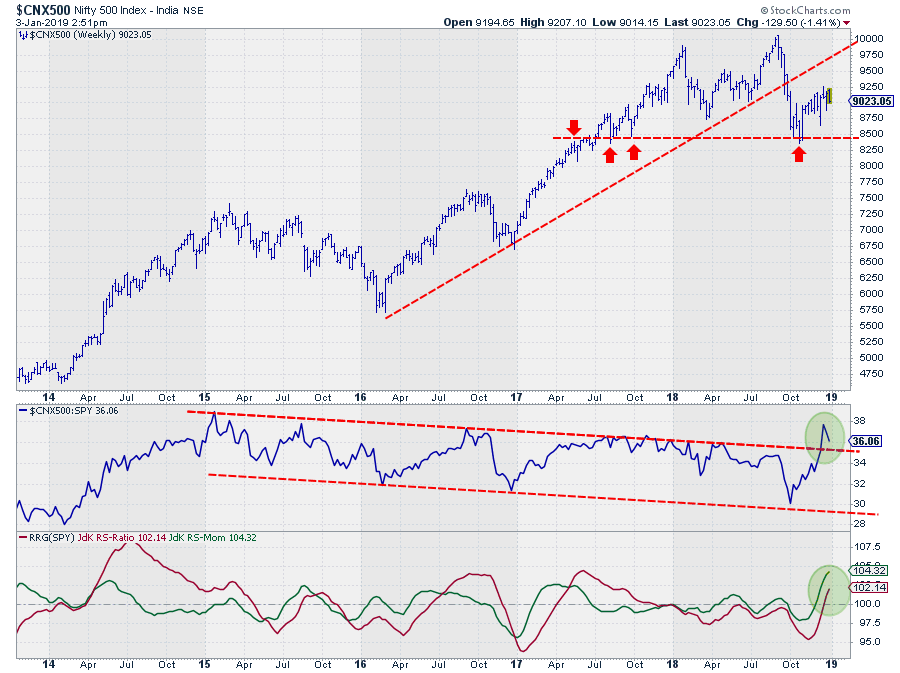 With the US stock market declining investors (may) need to look for alternatives in order to preserve capital. Sure enough, there are good opportunities in the US with bonds, IEF is doing very well, and cash is a very viable alternative if you do not "need" to be invested.
With the US stock market declining investors (may) need to look for alternatives in order to preserve capital. Sure enough, there are good opportunities in the US with bonds, IEF is doing very well, and cash is a very viable alternative if you do not "need" to be invested.
If you are in a position where you do need to be invested in stocks or you want to keep an allocation to stocks in your portfolio, even if it is an underweight position, you might need to look outside the US for alternatives.
The Relative Rotation Graph above shows the rotation for some major stock market indices around the world. The benchmark is the Dow Jones Global Index ($DJW).
There is one tail that stands out inside the leading quadrant and that is $CNX500, the Nifty 500 Index representing the 500 biggest companies in India.
In the past six months, this market rotated from leading through weakening and lagging back into leading again. Especially the fact that the distance between the observations is increasing in the most recent part of the tail, indicates relative strength behind the move.
A look at the price chart of $CNX500 in combination with relative strength against SPY shows a break of relative strength out of a multi-year downward sloping channel. This break is now also picked up by the RRG-Lines that cross above 100 for the first time since late 2017.
Support for $CNX500 has been established a few weeks ago near 8.450.
There are two ETFs in the Stockcharts.com database that can be used to get exposure to the Indian market. Their tickers are INDA and PIN. These are quoted in US-dollars so you will have to take the currency exchange rate $RUP into consideration as well, but a quick check learned me that this rate is in favor of INR over USD as well, especially if it can break below the support level at which it is currently resting.
Beware of the fact that it is still a relative play which means that there is still risk in price for the Indian market but it seems less than the risk in US markets which could make Indian stocks an alternative for the US.
My regular blog is the RRG blog If you would like to receive a notification when a new article is published there, simply "Subscribe" with your email address using the form below.
Julius de Kempenaer | RRG Research
RRG, Relative Rotation Graphs, JdK RS-Ratio, and JdK RS-Momentum are registered TradeMarks ®; of RRG Research
Follow RRG Research on social media:
Feedback, comments or questions are welcome at Juliusdk@stockcharts.com. I cannot promise to respond to each and every message but I will certainly read them and where reasonably possible use the feedback and comments or answer questions.
If you want to discuss RRG with me on SCAN, please use my handle Julius_RRG so that I will get a notification.

